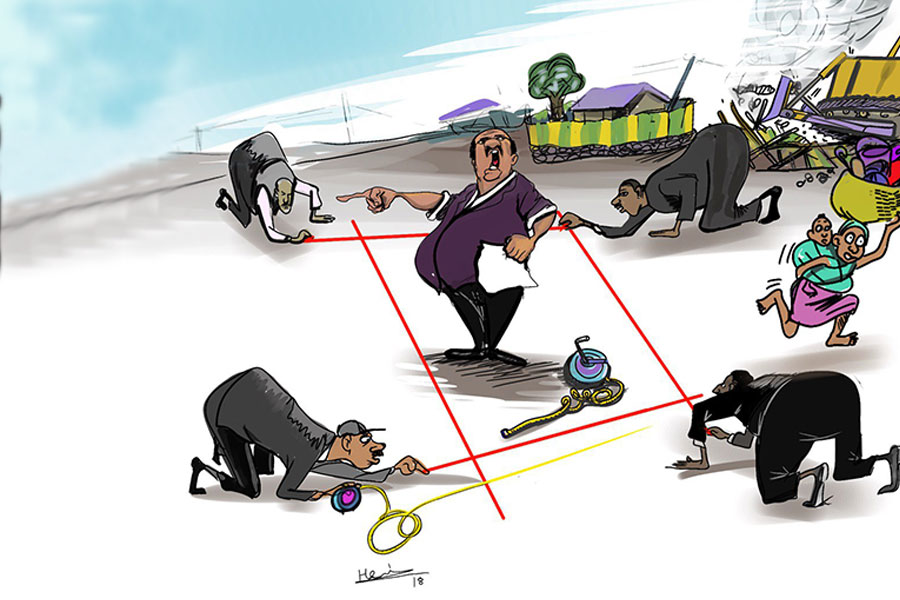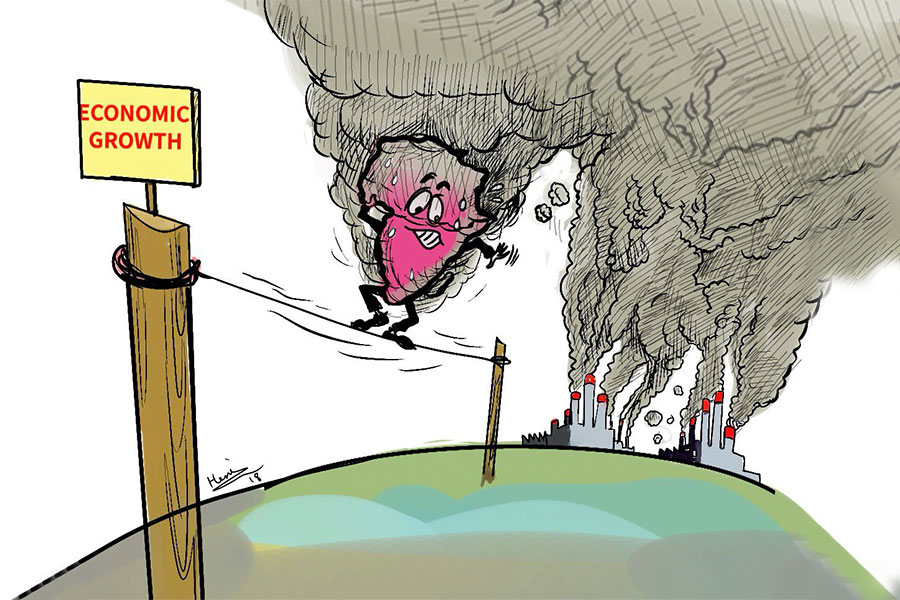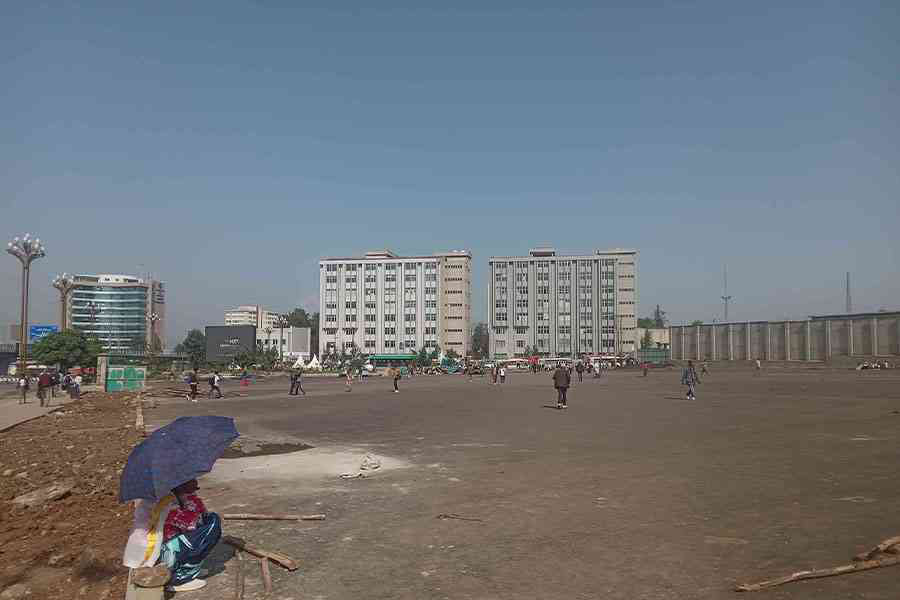
Radar | Mar 27,2021
Feb 15 , 2020
By Clay Webster
Clay Webster studied energy and environmental policy at Johns Hopkins School of Advanced International Studies. He has written about energy, commodity and financial markets for The Motley Fool, Plattsand US News & World Report.
Much of the well-trod terrain is covered on the dangers of unconstrained population growth in a recent piece headlined, “Marshall Plan for Africa Now or Doom by 2050,” [Volume 20, No 1026, December 29, 2019], by Yonas Biru, a former World Bank official.
Unmitigated population growth will place a greater burden on already scarce infrastructure and resources; societal unhappiness will soar with more unemployment; dangerous illegal migration will flourish; and the twin degradations of deforestation and global warming will make for a “nuclear cocktail,” in the author’s words.
All of that rings true and lends itself well to his proposal for a significant increase in foreign aid. But buried in the piece is a revolutionary proposal: “Aggressive population control should cut Africa’s population growth rate by more than half in 20 years.”
Sub-Saharan Africa’s population growth rate was 2.7pc in 2018, according to the World Bank, with Ethiopia just a hair below at 2.6pc. This translates to roughly 4.8 births per woman (4.3 in Ethiopia). Cutting the rate in half would mean that by 2040, African and Ethiopian women would have on average closer to two children. This might not be too far off if current trends continue. The birth rate was 7.4 as recently as 1984.
But while much smaller family sizes may be on the horizon, it is not necessary to only focus on the negative consequences of failing to curtail population growth. In fact, the greater reason for this policy is the significant effect smaller family sizes have on economic development.
For decades, development economists have studied the causes of growth to determine what can be done to raise the living standards of developing economies more quickly. In the Solow Growth Model, which has become the standard for most subsequent development models, investment equals the savings rate multiplied by a function of output by each worker. If the savings rate rises, investment rises in tandem and pushes up the overall output of workers.
While most growth models use a static savings rate, China’s one-child policy gives us a real-world experiment about what happens to national savings when the fertility rate is reduced. In 1979 China embarked on a series of reforms that ended up building the economic powerhouse we see today. Chief among them was the Draconian policy of limiting families to having one biological child.
Though this policy does not meet the human rights threshold for many observers, the net effect was drastically increasing the savings rate of Chinese households. This, in turn, allowed the society to significantly increase its investment rate, which helped launch the 1979 to 2009 economic growth trajectory that brought 700 million Chinese out of poverty.
“The investment rate has a significantly positive effect on the growth of GDP per worker,” found researchers Sai Ding and John Knight in a 2009 article in The Journal of Comparative Economics, adding that, besides other factors, China’s success is due in part to low population growth. In a separate 2017 study, titled “The One-Child Policy and Household Saving”, Taha Choukhmane, et al. find that “Quantitatively, the [one-child] policy can account for at least 30pc of the rise in aggregate saving.”
What this all means in laymen’s terms is that with fewer children to support, and the knowledge that an abundance of sons and daughters would not be around to take care of oneself in old age, Chinese couples began saving more of their salaries.
Those savings, in turn, were used to make investments, either in the quality of education for their only child, investment in their businesses, investment in other Chinese businesses or increased bank deposits. Increased bank deposits then allowed expanded lending to businesses to increase their fixed capital in the form of new machinery or factories.
In line with the Solow Growth Model, output increases with the more capital that is afforded to a worker. In the long run, this should raise wages, and thus aggregate investment, until a developing nation reaches its steady state where it converges with other developed economies.
Many academics find that China fits the 20th-century growth theory quite well. But Robert Lucas famously pointed out that many developing nations do not receive the level of foreign direct investment (FDI) that would be expected by Western growth models. Some blame this on weak institutions and government policies. Others place the blame on risk-averse international capital markets.
What can be said is that only one developing nation has ever taken these development models seriously enough to re-engineer their economy in such a short period. Most plod on in spurts and dribbles, acquiescing to whatever new global development trend becomes the decade’s buzzword.
PUBLISHED ON
Feb 15,2020 [ VOL
20 , NO
1033]


In-Picture | Sep 22,2024

Radar | Aug 01,2020

Radar | Oct 19,2024

Radar | Dec 17,2022

Radar | Sep 10,2023

Photo Gallery | 171251 Views | May 06,2019

Photo Gallery | 161494 Views | Apr 26,2019

Photo Gallery | 151194 Views | Oct 06,2021

My Opinion | 136284 Views | Aug 14,2021





Dec 22 , 2024 . By TIZITA SHEWAFERAW
Charged with transforming colossal state-owned enterprises into modern and competitiv...

Aug 18 , 2024 . By AKSAH ITALO
Although predictable Yonas Zerihun's job in the ride-hailing service is not immune to...

Jul 28 , 2024 . By TIZITA SHEWAFERAW
Unhabitual, perhaps too many, Samuel Gebreyohannes, 38, used to occasionally enjoy a couple of beers at breakfast. However, he recently swit...

Jul 13 , 2024 . By AKSAH ITALO
Investors who rely on tractors, trucks, and field vehicles for commuting, transporting commodities, and f...

Oct 4 , 2025
Eyob Tekalegn (PhD) had been in the Governor's chair for only weeks when, on Septembe...

Sep 27 , 2025
Four years into an experiment with “shock therapy” in education, the national moo...

Sep 20 , 2025
Getachew Reda's return to the national stage was always going to stir attention. Once...

Sep 13 , 2025
At its launch in Nairobi two years ago, the Africa Climate Summit was billed as the f...

Oct 5 , 2025 . By NAHOM AYELE
In Meqelle, a name long associated with industrial grit and regional pride is undergo...

Oct 5 , 2025 . By BEZAWIT HULUAGER
The federal government is set to roll out a new "motor vehicle circulation tax" in th...

Oct 5 , 2025 . By NAHOM AYELE
The Bank of Abyssinia is wrestling with the loss of a prime plot of land once leased...

Oct 5 , 2025 . By BEZAWIT HULUAGER
The Customs Commission has introduced new tariffs on a wide range of imported goods i...